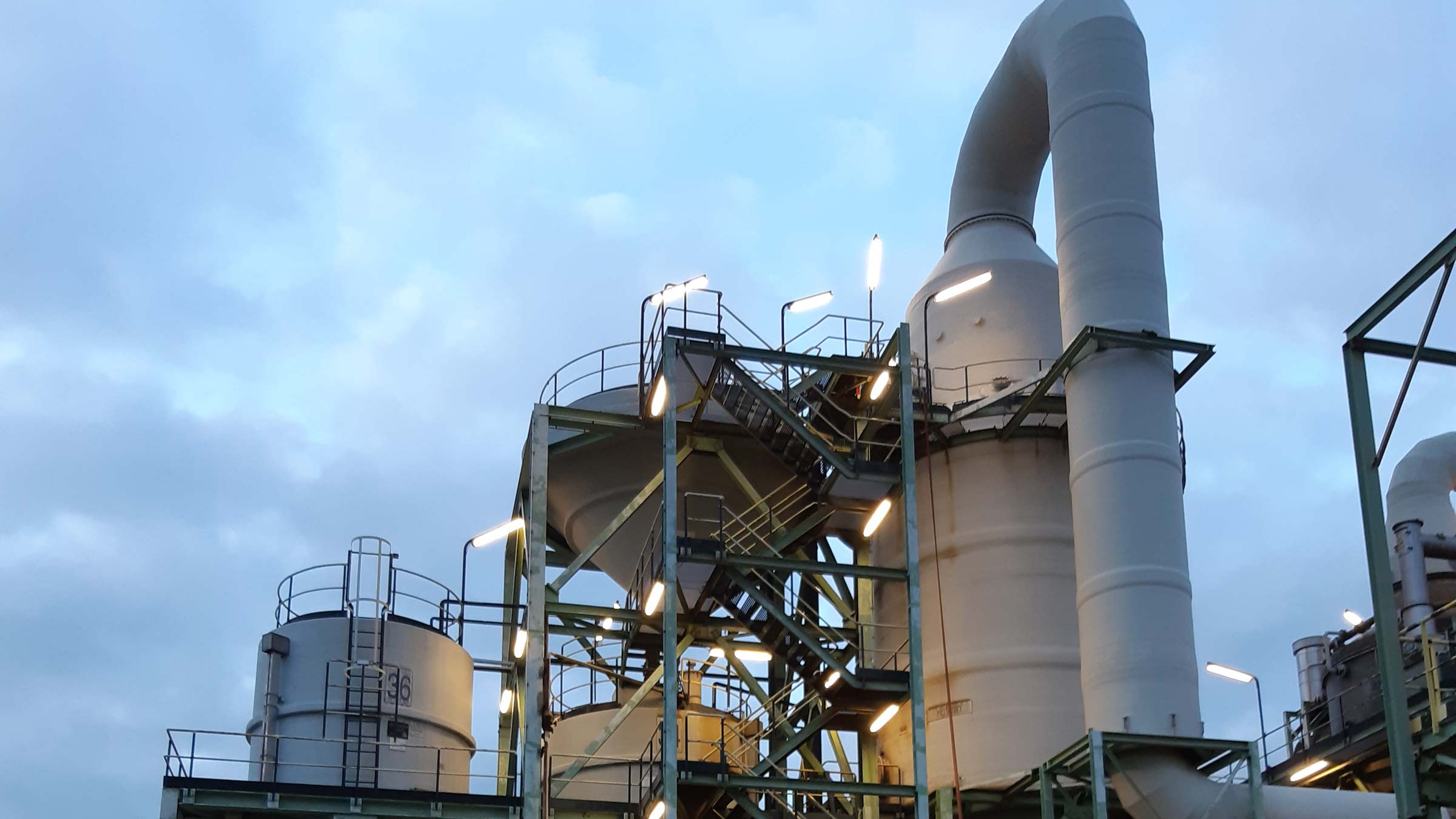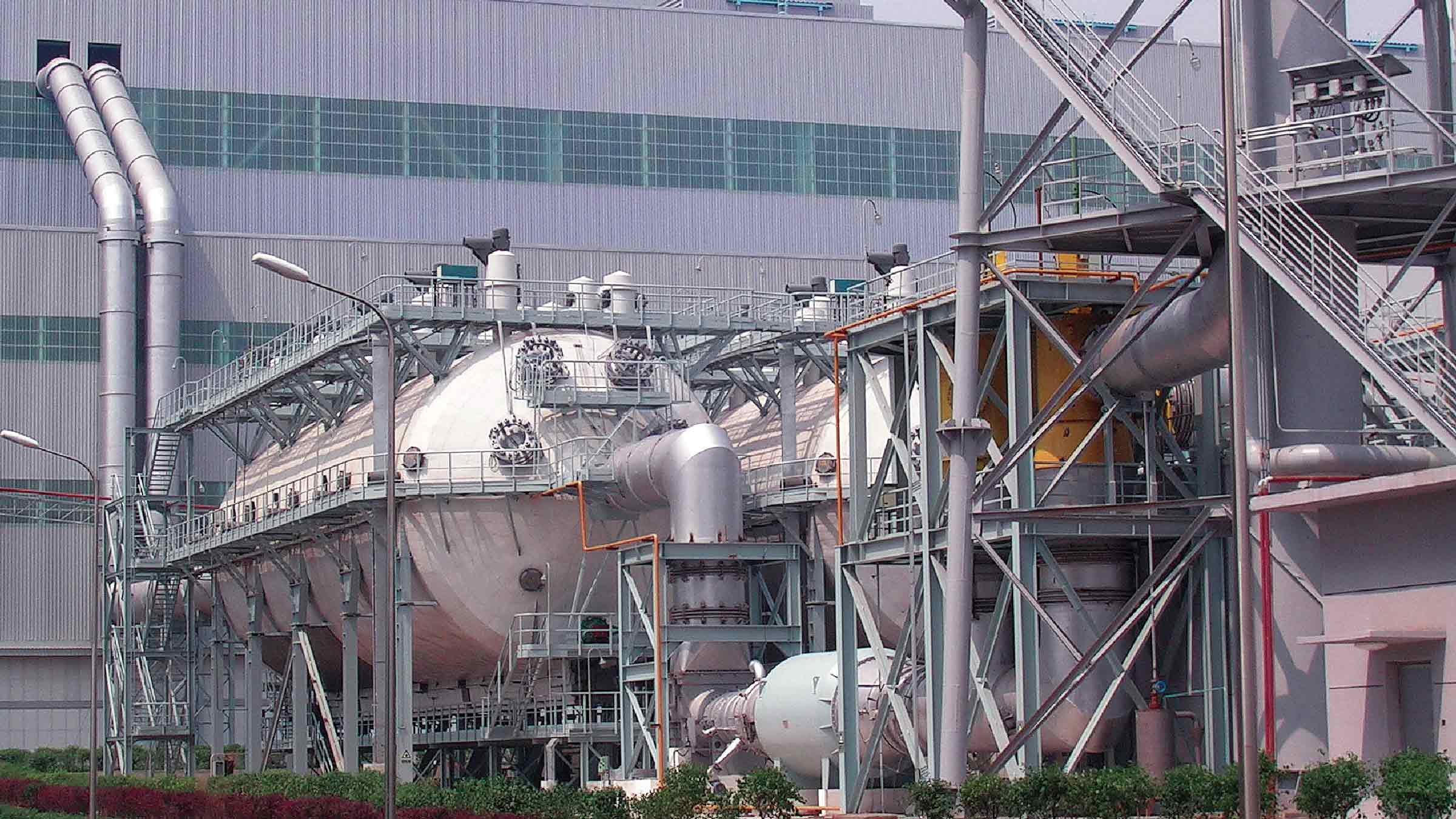Spray Drying Evaporation
The world-class thermal solution for achieving zero liquid discharge (ZLD)
GEA is, among others, a single-source supplier of cost effective, energy efficient and reliable wastewater evaporator systems, based on using spray drying evaporation.
Drying of salt and solid-containing effluents from various industrial processes, including wastewater streams from wet type FGD (flue-gas desulfurization), is efficiently enabled using the well-proven GEA spray drying technology and proprietary equipment. The heat of the hot flue gas from the industrial process is used to evaporate the water in the effluent, leaving a dry powder to be collected in a downstream filter with no liquid effluent discharge at all.
Spray drying is a mature technology that was developed over a century ago. GEA has successfully delivered installations worldwide across many different spray drying applications in the power, waste to energy, sinter & metallurgical and glass industries — to name some.
Key features
- Mature and well-proven technology.
- Unmatched rotary atomizer.
- Excellent performance and with outstanding distribution of droplets' size.
- Flexible process.
- The heat source for effluent evaporation can be hot flue gas or pre-heated combustion air.
- Dried salts and solids can be collected either in an optional particular filter or in the main dust collector.
- Can be adapted for large variations of hot gas temperatures and ash load.
- Full ranges of atomizer sizes for different effluent capacities.
- System simplicity. Carbon steel construction with high degree of local supply.
Working Principle
Working Principle of Spray Drying Evaporation
The GEA spray drying evaporation process is highly efficient yet very simple, as it basically consists of the spray dryer evaporator module and a down-stream filter.
A slipstream of hot flue gas is fed into a spray-drying chamber where it immediately comes in contact with a fine spray from atomization of the discharged scrubber liquid of a wet FGD (WFGD) system.
There is a precise control of the gas distribution, the WFGD scrubber liquid flow rate and droplet size to ensure that all droplets are converted into a fine dry powder.
The flue gas further flows into an optional dust collector or the main filter where any remaining suspended solids are removed. The filtered flue gases are then fed to the wet FGD for acid gases removal.
Downloads
Verwandte Produkte

Heavy metal removal
Environmental pollution of heavy metals is increasingly becoming a problem and global concern. In addition to the calomel process, often used in the field of non-ferrous metal production, GEA uses wet Electrostatic Precipitators (ESP), Spray Drying Absorption (SDA) and Ceramic Catalyst Candles (BisCat) to reduce heavy metals from flue gas.

Bubble column reactor
Bubble Columns feature a high liquid to gas volume ratio, beneficial when conducting rather slow reactions in the liquid phase as large reaction volumes can be realized. Ideal when dry spots must be avoided in the contactor.

Converter gas recovery (LT process)
The conversion of hot metal into steel produces CO-laden gases of high caloric value. The recovery of these gases means to save a considerable amount of energy. The LT-Steel Gas Process has established worldwide.

Aerosol-Abscheidesysteme
Unmittelbar vor der Venturi-Kehle wird eine geeignete Waschflüssigkeit mittels spezieller Düsen eingespritzt und homogen über den gesamten Querschnitt verteilt.
GEA Insights
Gefriertrocknung in der Pharma-Branche: Alle Vials sind gleich! Oder?
Nur eine Zeiterscheinung oder die Zukunft? In jedem Fall wird die hundertprozentige Nachverfolgbarkeit von Vials für pharmazeutische Unternehmen, die Gefriertrocknung einsetzen, ein zunehmend wichtiges Thema. Wir bei GEA verfolgen diese Entwicklung aufmerksam und prüfen mögliche Lösungen. Vor allem aber verfügen wir über die Erfahrung, den Sachverstand und das Know-how, sie umzusetzen.
Es geht auch ohne: Alkoholfreies Bier kommt an
Es gab Zeiten, in denen die Worte „alkoholfreies Bier“ und „schmeckt gut“ kaum je im selben Atemzug genannt wurden – schon gar nicht von den Konsumenten. Doch alkoholarme und alkoholfreie Biere haben eine enorme Entwicklung hingelegt und sind heute vielfach als Erfrischungsgetränke etabliert. Nicht zuletzt dank der Technologie von GEA.
Innovating patient care with aseptic spray drying
At GEA, our commitment to engineering for a better world fuels our pursuit of innovative solutions that enhance patient care and safety. One of our most promising ventures in recent years is aseptic spray drying – a technology that promises to revolutionize pharmaceutical manufacturing.